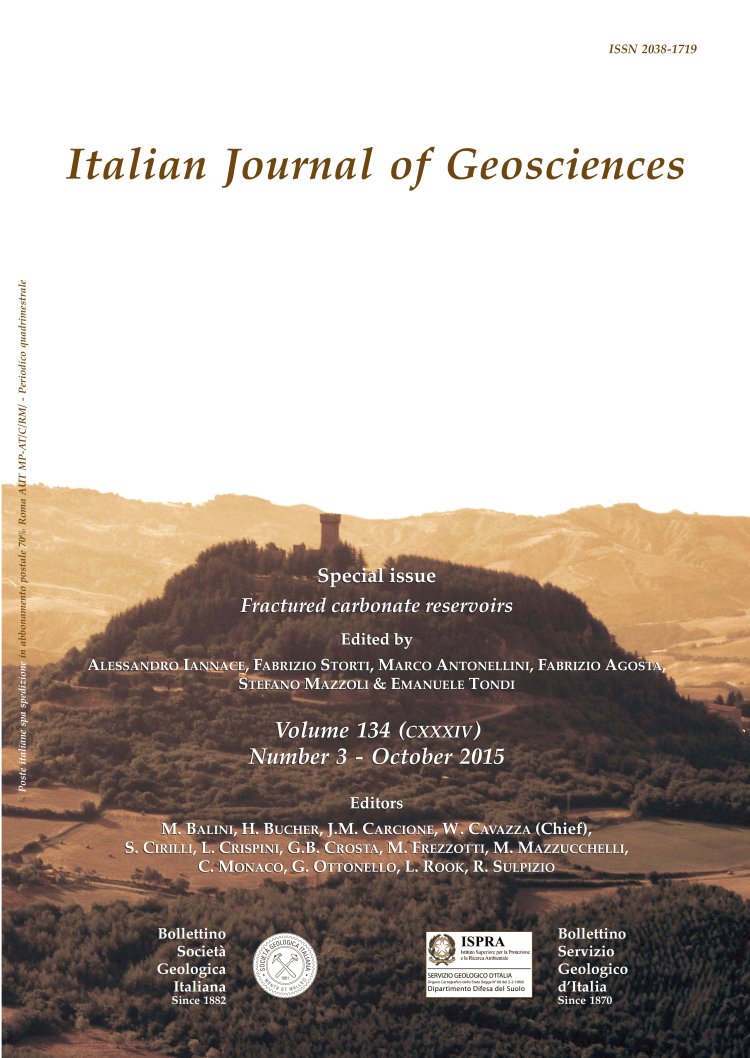
Characterisation of the permeability anisotropy of Cretaceous platform carbonates by using 3D fracture modeling: the case study of Agri Valley fault zones (southern Italy)
Irina Korneva (*), Antonino Cilona (**), Emanuele Tondi (*), Fabrizio Agosta (***) & Maurizio Giorgioni (****)
(*) Geology Division, School of Environmental Sciences, University of Camerino, Italy. Corresponding author e-mail: irina.korneva@unicam.it; tel: +39 3332705331; fax: +39 0737 402644.
(**) Department of Geological and Environmental Sciences, Stanford University, U.S.A.
(***) Department of Sciences, University of Basilicata, Italy.
(****) SHELL Italia E&P, Italy.
Volume: 134 (2015) f.3
Pages: 396-408
Abstract
In the Agri Valley, high-angle faults crosscut platform carbonates that are analogues of the lithological units that host the deep seated largest onshore oil reservoir in Europe. The main faults are W-NW oriented with a left-lateral strike-slip kinematics; additionally, three sets of related secondary faults are present: (i) N-NE oriented with right-lateral/transtensional kinematics; (ii) E-W trending leftlateral transtensional and (iii) N-NW trending left-lateral transpressional.
Two of the secondary N-NE striking faults, strike-slip and transtensional, together with the adjacent host rock, were selected to build a Discrete Fracture Network model eventually used to evaluate the hydraulic properties and permeability anisotropy of these faults.
The outcomes of this modelling show that the total permeability of the fault zones is higher than that one of the host rock. Moreover, the results are consistent with the transtensional fault having higher permeability values relative to the strike-slip one. The permeability anisotropy within the fault damage zone as well as in the host rock is mainly related to the fracture orientation.
Two of the secondary N-NE striking faults, strike-slip and transtensional, together with the adjacent host rock, were selected to build a Discrete Fracture Network model eventually used to evaluate the hydraulic properties and permeability anisotropy of these faults.
The outcomes of this modelling show that the total permeability of the fault zones is higher than that one of the host rock. Moreover, the results are consistent with the transtensional fault having higher permeability values relative to the strike-slip one. The permeability anisotropy within the fault damage zone as well as in the host rock is mainly related to the fracture orientation.
Keywords
tight carbonates, discrete fracture network, fault hydraulic behaviour, fracture porosity, permeability anisotropy.
Get Full Text